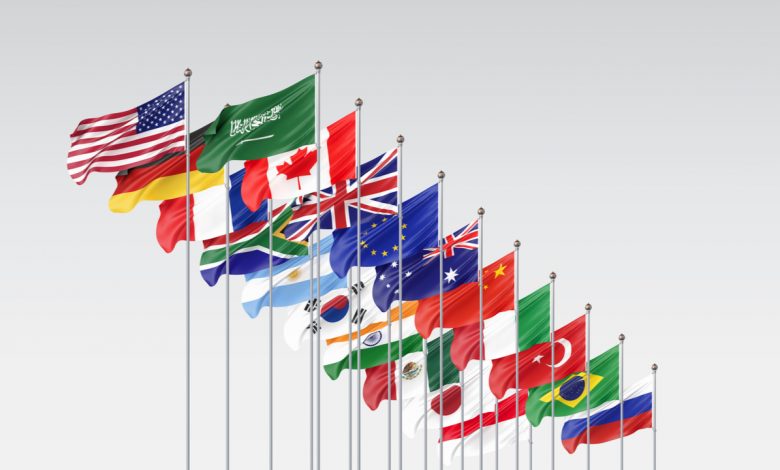G20 Countries Face Spiraling Climate Change Impacts Without Urgent Emissions Reductions
This report, the first of its kind, shows that climate change will rip through the G20

A comprehensive G20 Climate Impacts Atlas launched today shows that Climate change is impacting all aspects of life – be it our health, our food supply, or our ways of making a living.The report examines the impacts of climate change on ten indicators, from agriculture to health, for each G20 member.
This report, the first of its kind, shows that climate change will rip through the G20. The bloc as a whole stands to lose about 4% of GDP due to climate shocks as soon as 2050 – in just 29 years time – and 8% by 2100. The USA, Saudi Arabia, India, Japan, and South Korea could all see more than 10% knocked off their GDP, with Canada, Indonesia and South Africa seeing losses of over 13%.
Climate impacts are already hitting the bloc. Over the last 20 years, heat-related deaths have increased by at least 15% in all G20 countries, while forest fires in the G20 have burnt an area one and a half times the size of Canada. And worse is to come.
The broad suite of indicators presented in this Atlas clearly drive home the message that climate change is impacting all aspects of life – be it our health, our food supply, or our ways of making a living. From here, decision-makers in all G20 countries can begin to zoom in and identify the communities most in need of adaptation investments to combat concurrent heat extremes, sea level rise, wildfire smoke and other climate change threats.” – says Dr Michelle Tigchelaar of University of Stanford.
From rising sea levels to plummeting freshwater availability, from spreading dengue to spiking heat deaths, no aspect of life in G20 countries will be untouched by climate change. The research shows that rising temperatures and intense heatwaves could cause severe droughts; threatening essential water supplies for agriculture, causing huge loss of human life and increasing the chance of deadly fires. In specific countries, this could mean:
● Heatwaves could last at least ten times longer in all G20 countries, with heatwaves in Argentina, Brazil and Indonesia lasting over 60 times longer by 2050.
● In India, declines in rice and wheat production could spark economic losses of up to €81 billion and a loss of 15% of farmers’ incomes by 2050.
● In Australia, bushfires, coastal floods and hurricanes could raise insurance costs and reduce property values by $611 billion by 2050.
The report finds that without urgent action to reduce carbon emissions, GDP losses due to climate damage in G20 countries increase each year, rising to at least 4% annually by 2050. This could reach over 8% by 2100, equivalent to twice the bloc’s economic losses from Covid-19. Some countries will be even worse hit, such as Canada, which could see at least 4% knocked off its GDP by 2050 and over 13% – €133 billion – by 2100.
In India, impacts include:
Heatwaves will last 25 times longer by 2036-2065 if emissions are high (4°C), over five times longer if global temperature rise is constrained to about 2°C, and one and a half times longer if emissions are very low and temperature rise only reaches 1.5°C.
Even assuming sufficient water and nutrient supplies, not including the impact of climate change on pests or diseases, or extreme events such as floods or storms, and including a strong effect of CO2 fertilization, sugarcane, rice, wheat, and maize yields in India would be set to fall as the climate warms. In reality, these conditions may not be met, for example water demand for agriculture is likely to rise around about 29% by 2050 – meaning yield losses are likely to be underestimated.
Furthermore, on a pathway to 4°C global heating, agricultural drought will become 48% more frequent by 2036-2065. On a 2°C pathway (the maximum temperature agreed by the Paris Agreement) this drops to 20% more frequent, and constraining temperature rise to 1.5°C (the aspirational goal of the Paris Agreement), agricultural drought will still be 13% more frequent.
Potential fish catch could fall 8.8% by 2050 if emissions are low, and 17.1% if they are high.
Just under 18 million Indians could be at risk of river flooding by 2050 if emissions are high, compared to 1.3 million today.
Total labour is expected to decline by 13.4% under a low emissions scenario by 2050 due to the increase in heat, and by 24% under a medium emissions scenario by 2080.
These estimates are broadly consistent with recent research which finds that even the “non-catastrophic” climate change scenarios are likely to be incredibly costly from a social and economic perspective. Losses of 2-4% of GDP annually by 2050 – those aren’t small numbers, especially since we are talking about rich developed economies like the US. They also highlight the tremendous variability in climate change impacts – not only across countries, but also within. Some parts of the US are expected to be hit harder than others, and in different ways.
The writer of this article is Dr. Seema Javed, a known Environmentalist, Journalist and Communications Expert




